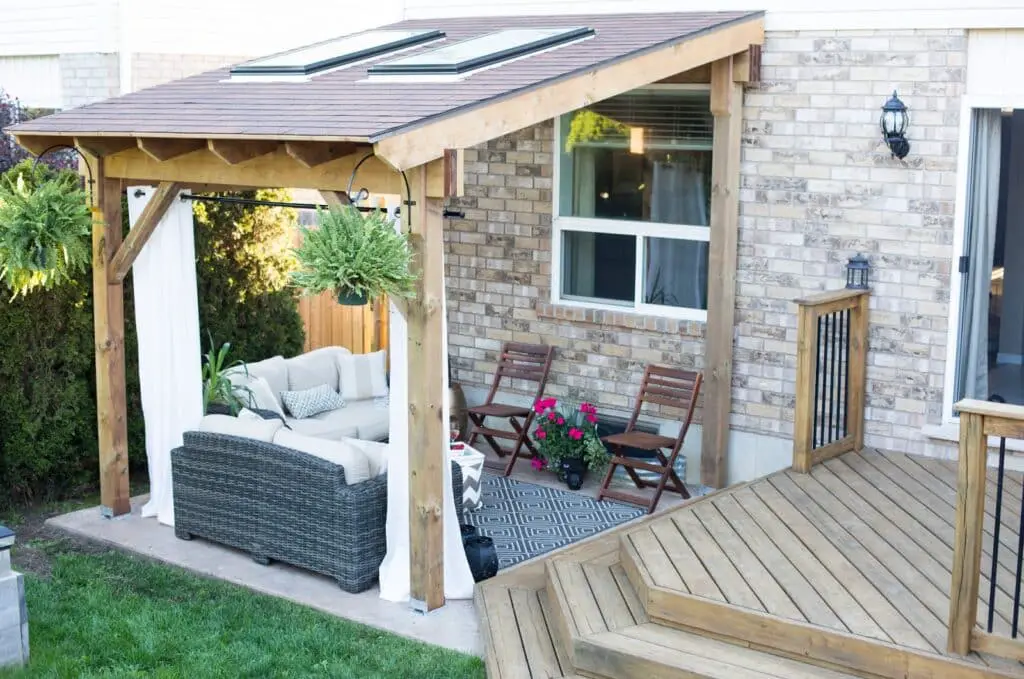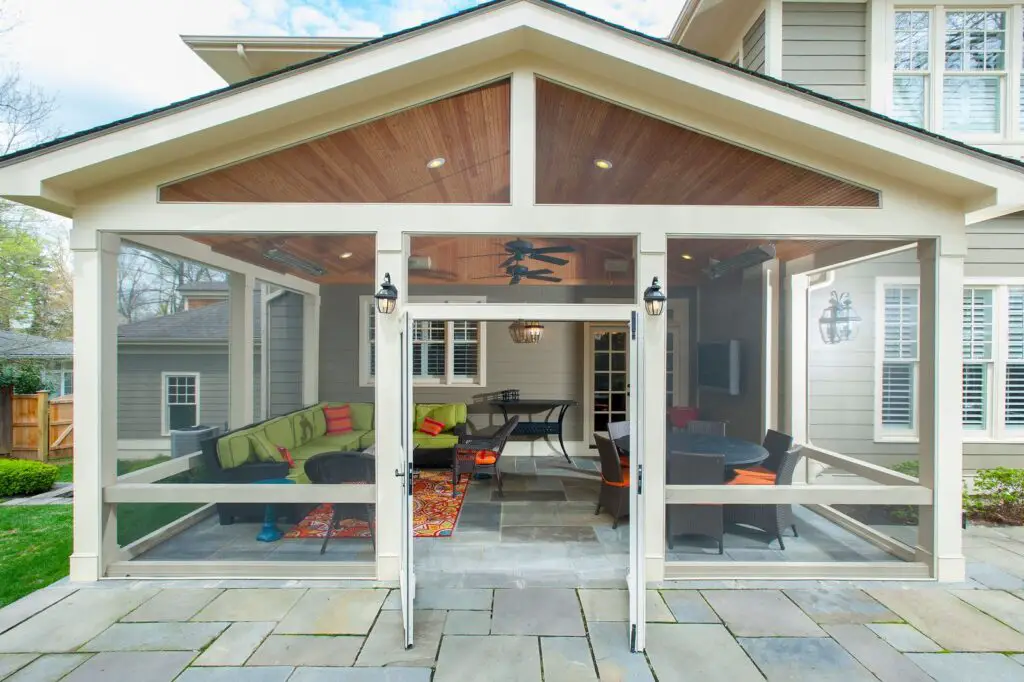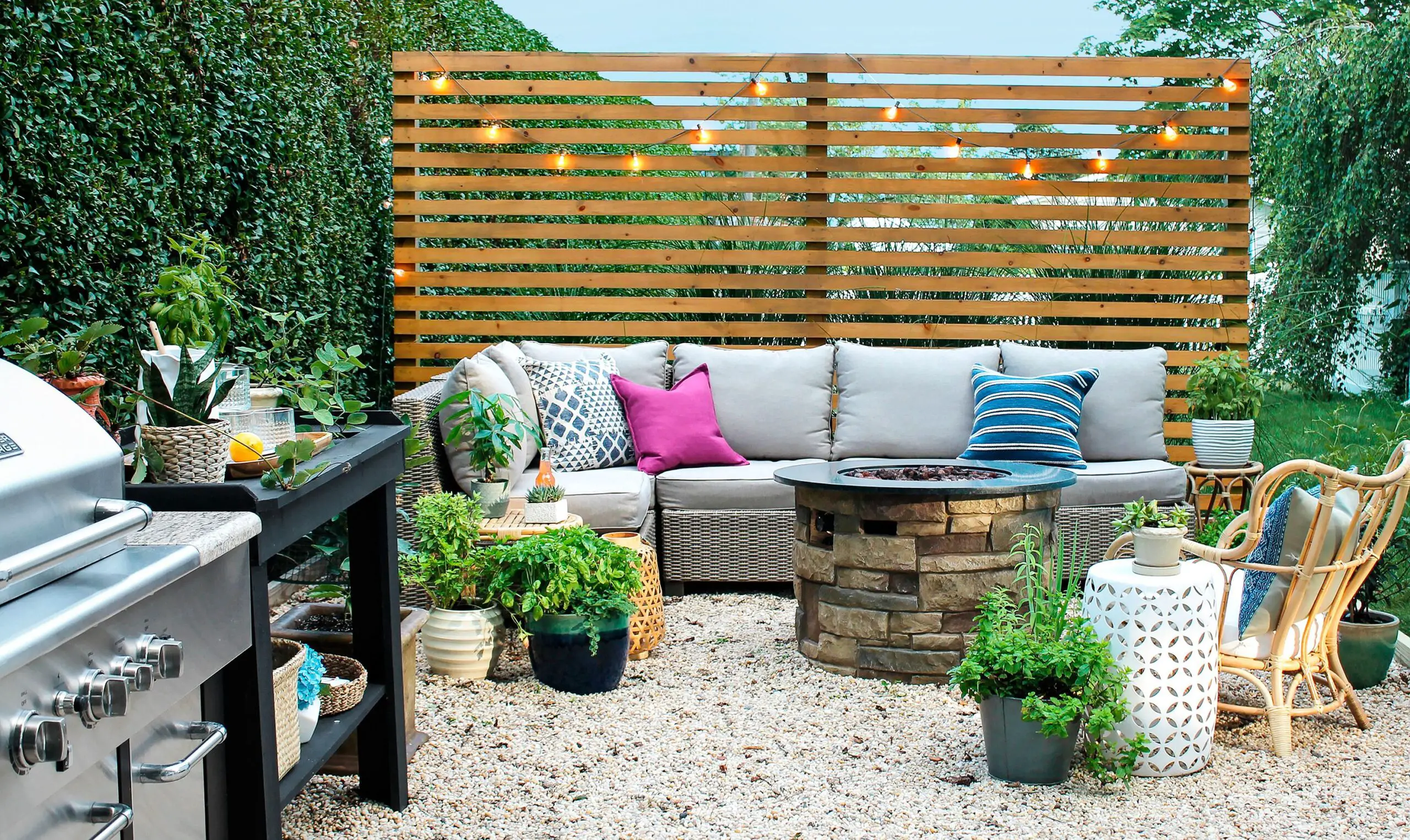How To Screen In A Covered Patio
Introduction
How To Screen In A Covered Patio: Having a covered patio is a wonderful addition to any home. It provides a comfortable outdoor space where you can relax, entertain guests, or simply enjoy the fresh air. However, if you want to make the most of your covered patio, you may want to consider screening it in. Screening in your patio can offer numerous benefits, such as keeping out insects, providing shade, and creating a more private and intimate space.
Screening in a covered patio may seem like a daunting task, but with the right guidance and tools, it can be a relatively straightforward project. In this article, we will provide you with a step-by-step guide on how to screen in your covered patio, so you can start enjoying the benefits of an enclosed outdoor space.
Before we dive into the process of screening in a covered outside patio, let’s take a moment to explore the benefits of this project. First and foremost, screening in your patio allows you to enjoy the outdoors without the annoyance of pesky insects. Whether it’s mosquitoes, flies, or other bugs, having a screened-in patio provides a barrier that keeps them out, allowing you to relax and enjoy your time outside.
In addition to keeping out insects, screening in your covered patio also provides shade and protection from the elements. This is especially beneficial during hot summer months when the sun’s rays can be intense. With a screened-in patio, you can still enjoy the outdoors while staying cool and protected from harmful UV rays. Furthermore, a screened-in patio can offer privacy, creating a more intimate and secluded space for you and your family to enjoy.

Can you screen in a covered porch?
Yes, it is possible to screen in a covered porch. Screening in a porch can provide several benefits, such as keeping out insects and pests, providing shade and privacy, and creating an additional usable space in your home. Whether you have an existing covered porch or are planning to build one, screening it in can be a great investment.
Screening in a covered porch involves enclosing the space with screens to create a barrier between the porch and the outside environment. This can be done using various materials, such as fiberglass, aluminum, or vinyl screens. The screens are typically attached to the existing structure of the porch, such as the posts and beams, to create a secure enclosure.
When screening in a covered porch, it is important to consider the design and layout of the space. You will need to determine the size and type of screens that will best fit your porch, as well as the method of installation. Additionally, you may want to consider adding a door or entrance to the screened porch, which can be a sliding or hinged door.
There are several factors to consider when deciding to screen in a covered porch. First, you will need to check with your local building codes and regulations to ensure that screening in a porch is allowed in your area. Some areas may have specific requirements or restrictions regarding the construction and installation of screened porches.
Additionally, you will need to consider the cost of screening in a porch. The cost will depend on various factors, such as the size of the porch, the type of screens used, and the method of installation. It is recommended to get quotes from multiple contractors to compare prices and choose the best option for your budget.
What is cheapest way to screen in patio?
When it comes to screening in a patio, many homeowners are looking for the most cost-effective option. After all, no one wants to break the bank just to enjoy some bug-free outdoor time. Fortunately, there are several affordable ways to screen in a patio without sacrificing quality or aesthetics.
One of the cheapest ways to screen in a patio is by using mosquito netting. This lightweight and breathable material is perfect for keeping out pesky insects while still allowing fresh air to flow through. Mosquito netting can be easily attached to the existing structure of the patio using hooks or Velcro, making it a quick and inexpensive solution.
Another affordable option for screening in a patio is using outdoor curtains. These curtains are made from durable and weather-resistant materials, such as polyester or canvas, and can be hung from a rod or wire. Outdoor curtains not only provide privacy and shade, but they can also be closed to keep out bugs and debris.
If you’re looking for a more permanent solution, consider using screen panels. These panels are typically made from aluminum or fiberglass and can be installed directly onto the patio structure. While screen panels may require a bit more upfront investment, they offer a long-lasting and durable solution that will stand up to the elements.
For those on a tight budget, DIY options can be a great way to save money while still achieving a screened-in patio. One popular DIY method is using PVC pipe and plastic mesh. By constructing a frame using PVC pipe and attaching the mesh, homeowners can create a custom-sized screen that fits their patio perfectly.
How do you enclose a covered porch?
Covering your porch might help you enjoy the outdoors without bugs or provide a cozy spot for parties. A covered porch can be enclosed in numerous ways, depending on your budget, preferences, and environment.
Screens can enclose a covered porch. This is useful for keeping bugs out while enjoying fresh air and natural light. Installing screens on the porch construction stops insects from entering. Mesh screens and retractable screens can be used.
Windows can also enclose a covered porch. A fully enclosed room can be used year-round, regardless of the weather. Installation of windows on the porch construction provides insulation and weather protection. You can choose from sliding, casement, and double-hung windows to suit your needs.
If you want to create a more permanent and insulated space, you can consider enclosing your covered porch with walls. This option provides the most protection from the elements and allows you to fully customize the space. Walls can be constructed using various materials, such as wood, vinyl, or brick, depending on your budget and aesthetic preferences. Insulation can also be added to the walls to ensure that the enclosed porch remains comfortable throughout the year.
What is the best screen for covered porch?
Your screen choice depends on your needs, preferences, and porch temperature and environment. There are several solutions for pest protection, seclusion, and outdoor enjoyment without the elements.
Fiberglass porch screens are popular. Fiberglass screens are lightweight, corrosion-resistant, and robust. Many homeowners choose them because they are easy to clean and maintain. Fiberglass screens offer great visibility and circulation, letting you enjoy the outdoors while keeping bugs out.
Vinyl-coated polyester screens are another possibility. Its strength and endurance make this screen ideal for windy or rainy situations. Vinyl-coated polyester screens are durable outdoor screens that resist fading and UV damage. These screens offer good visibility and airflow, making them popular among outdoor enthusiasts who demand comfort.
Consider a privacy screen if privacy is important. Privacy screens are composed of heavier materials like vinyl or metal to hide outside views. These screens are perfect for creating a more private porch environment. Privacy screens are adaptable for covered porches since they protect against wind and weather.
How do you add privacy to a covered porch?
There are several ways to make your porch more private, whether you want to have coffee in peace or host guests. You can turn your porch into a private haven with privacy screens, plants, and drapes.
seclusion screens are an easy method to give a covered porch seclusion. Wood, metal, or vinyl screens can be customized to meet your porch’s size and design. Privacy screens protect your porch and beautify it. You may complement your porch’s style with several styles and patterns.
Plants can also provide seclusion to a covered porch. Tall potted plants or planter boxes along your porch can obstruct the view from the outside. Choose plants with lush foliage or climbing vines to cover the porch railing or walls. These plants will give privacy and greenery to your porch.
For added versatility, use outdoor curtains or shutters. These are easy to put on your porch and provide instant privacy. Outdoor curtains are available in several colors and fabrics to suit your privacy and decor needs.
To screen in a covered patio
1. Screen material: This is the most important material needed for screening in a covered patio. You can choose from various options such as fiberglass, aluminum, or polyester. It is essential to select a durable and weather-resistant screen material that can withstand outdoor conditions.
2. Screen frame: The screen frame is used to hold the screen material in place. It can be made of aluminum, wood, or PVC. The frame should be sturdy enough to support the screen and withstand wind and other external forces.
3. Fasteners: Fasteners such as screws, nails, or clips are required to secure the screen material to the frame. Make sure to choose fasteners that are suitable for outdoor use and can withstand weather conditions.
4. Door and window hardware: If you plan to have doors or windows in your screened patio, you will need appropriate hardware such as hinges, latches, and handles. These will ensure easy access and functionality.
5. Additional materials: Depending on your specific needs, you may require additional materials such as weatherstripping, caulking, or trim to provide a finished look and enhance the functionality of your screened patio.
Overall, selecting high-quality materials is crucial to ensure the longevity and effectiveness of your screened patio. It is recommended to consult with professionals or experts in the field to determine the most suitable materials for your specific project.
What steps are involved in screening in a covered patio?
Screening in a covered patio involves several steps to ensure a successful and functional result. The first step is to measure the dimensions of the patio area to determine the amount of screening material needed. It is important to choose a durable and weather-resistant screening material, such as fiberglass or aluminum, that can withstand outdoor conditions.
Next, the existing framework of the patio needs to be prepared for the screening. This may involve removing any existing screens or panels, as well as cleaning and repairing the framework if necessary. Once the framework is ready, the screening material can be cut to size and attached securely using staples, screws, or a screen spline.
After the screening material is installed, it is important to check for any gaps or loose areas that may allow insects or debris to enter. These can be sealed using caulk or weatherstripping. Finally, any finishing touches, such as adding trim or decorative elements, can be done to enhance the overall appearance of the screened-in patio.
Are there any specific tools or equipment required for this project?
For good covered patio screening, you’ll need many tools and equipment. First, use a measuring tape to correctly measure your patio and determine the screening material needed. Cutting the screening material to size requires a utility knife or scissors.
Attach the screening material to the patio frame with a staple gun or hammer and nails. Choosing the right fastening method for your frame is crucial. A staple gun works for wooden patio frames. Attaching the screening material may require screws or clips if your patio has a metal frame.
Finally, if you have a two-story patio or high ceiling, you may need a ladder or scaffolding to access higher regions. This will ensure adequate screening material installation throughout the patio. Follow all ladder and scaffolding safety requirements and work at heights with caution.
Are there any potential challenges or obstacles to consider when screening in a covered patio?
When screening in a covered patio, there are several potential challenges or obstacles that you may encounter. One of the main challenges is ensuring that the screen material is properly installed and secured. This can be tricky, especially if you have a large patio or if the screen needs to be attached to uneven surfaces. It is important to carefully measure and cut the screen material to fit the patio, and to use the appropriate tools and techniques to secure it in place.
Another challenge to consider is the weather. If you live in an area with strong winds or heavy rain, you may need to choose a screen material that is durable and weather-resistant. Additionally, you may need to reinforce the screen installation to ensure that it can withstand the elements. It is also important to consider the impact of sunlight on the screen material. Over time, exposure to direct sunlight can cause the screen to fade or deteriorate. To mitigate this, you may need to choose a screen material that is UV-resistant or install a shade or awning to protect the screen from direct sunlight.
Are there any recommended tips or techniques for achieving the best results when screening in a covered patio?
When it comes to screening in a covered patio, there are a few tips and techniques that can help you achieve the best results. Firstly, it is important to carefully measure and plan the layout of the screening material. This will ensure that you have enough material to cover the entire patio and that it fits securely. Additionally, using high-quality screening material is essential for durability and longevity. Look for materials that are resistant to tears and UV rays, as these will provide the best protection against the elements.
Another tip is to properly secure the screening material to the patio structure. This can be done using staples, screws, or a combination of both. Make sure to evenly distribute the fasteners to prevent any sagging or loose areas. Additionally, consider adding a trim or molding around the edges of the screening material to give it a finished look and provide extra stability.
Lastly, regularly inspect and maintain the screened-in patio to ensure its longevity. Clean the screening material regularly to remove any dirt or debris that may accumulate. Additionally, check for any signs of wear or damage and repair or replace the screening material as needed. By following these tips and techniques, you can achieve the best results when screening in a covered patio and enjoy a comfortable and protected outdoor space.

Conclusion
Screening in a covered patio is a great way to create an outdoor space that is protected from insects and other pests, while still allowing you to enjoy the fresh air and natural light. Whether you want to create a cozy reading nook or a space for entertaining guests, screening in your patio can provide the perfect solution.
There are several steps involved in screening in a covered screen patio. First, you will need to measure the dimensions of your patio to determine how much screening material you will need. It is important to choose a screening material that is durable and resistant to tears and punctures. Fiberglass and aluminum are popular choices for patio screens, as they are both strong and long-lasting.
Once you have the necessary materials, you will need to remove any existing screens or coverings from your patio. This may involve removing screws or nails, so be sure to have the appropriate tools on hand. Next, you will need to attach the screening material to the frame of your patio. This can be done using a staple gun or by using a combination of screws and washers.
After the screening material is securely attached, you will need to trim any excess material and secure the edges. This can be done using a utility knife and a screen spline, which is a flexible rubber cord that holds the screen in place. Finally, you will need to install a door or gate to provide access to your screened-in patio. This can be a simple hinged door or a sliding door, depending on your preference and the layout of your patio.








